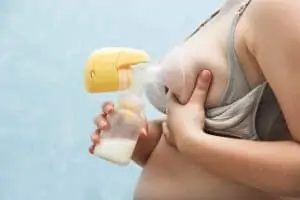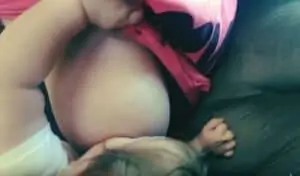All breastfeeding relationships come to an end sooner or later, and weaning comes with some problems. Not only do you need to figure out how to wean your child, but you also have to dry up your milk supply without getting mastitis. Any mom who has had mastitis will tell you that you want to avoid that at all costs.
Clogged ducts and mastitis are two problems that breastfeeding mothers face while weaning. They lead to extreme pain, and mastitis involves inflammation and an infection of your breast tissue. It’s essential to avoid mastitis when weaning.
Let’s take a look at how to prevent mastitis when stopping breastfeeding. These tips are essential for all breastfeeding mothers to know.
What is Mastitis?
Mastitis happens at any time in a woman’s life, but it’s most common during breastfeeding. Milk ducts are a system of tubes throughout your breasts that bring your breast milk to your baby. When milk ducts become obstructed, breast milk is unable to flow properly.
If milk ducts are obstructed, this causes the breast tissue to become inflamed, swollen, and stiff. If you gently press on your breast, it may feel like a lump has formed under your skin.
Several issues cause mastitis.
Not Emptying Breasts Fully
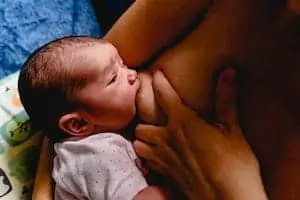
Obstructions happen when your breasts are unable to empty properly. Problems latching are the most common reason that your baby might not empty your breasts fully. Other causes are that you aren’t feeding or pumping consistently. Going long periods without expressing milk leads to blockages.
Bacterial Infections
If your baby latched improperly and broke the skin on your nipple, that can lead to a severe problem. Bacteria enter through tiny cuts on the skin, leading to severe infections.
Allergies
Many people never think that allergies can cause problems with breasts, but allergies cause inflammation that might obstruct your milk ducts.
Tight and Restrictive Clothing
Wearing tight clothing or bras is a no-no, especially while breastfeeding. Restrictive clothing applies pressure to your breasts, reducing the flow of milk. Make sure to wear properly fitting bras and give the girls time to breathe.
The Signs of Mastitis
So, how do you know if you have mastitis? The symptoms tend to be quite obvious and appear quickly. Watch for these signs.
- Lumps
Look for swollen breast tissue that is hard, forming into a lump. The lump feels tender when pressure is applied.
- Redness
As mastitis progresses, you will see redness on the affected breasts, potentially in streaks of redness as the infection grows.
- Heat
You might feel a painful sensation of heat throughout your breast and the skin around your breast.
- Fever
Unlike clogged ducts, mastitis nearly always causes fever and flu-like symptoms.
Many mothers say that they feel as if they have the flu or flu-like symptoms while mastitis appears. Your body might hurt, and you feel overall not well. These are signs of calling your doctor quickly for medication.
Clogged Duct vs. Mastitis
How can you tell apart a clogged duct and mastitis?
The main differences are that clogged ducts are painful and develop a lump, but you won’t have a fever, chills, or flu-like symptoms. A clogged duct comes before mastitis. It all starts with a clogged duct that doesn’t resolve, turning into a breast infection.
How to Stop Breastfeeding Without Getting Mastitis
If you want to avoid mastitis when stopping breastfeeding, you need a plan. Avoid using methods, such as cold turkey, that will lead to clogged ducts.
Start Slow and Drop a Single Session
If you want to avoid mastitis while drying up your milk supply, this route is the easiest for drying up for mama and baby. Start by dropping the easiest session for your baby, which usually is a daytime feeding when your child is busy playing.
Offer other liquids, snacks, or distracting with something fun. Night feeds are often the hardest to drops and the first nursing session in the morning. These are sessions when you might need your partner to take over; breastfed babies can be quite angry when weaning.
If you’re wondering how to stop pumping without getting mastitis, dropping an individual session at a time is the easiest route as well.
Wait several days in between the dropping of a session. That gives your body time to adjust your milk supply and avoid getting a clogged duct.
Drink Sage Tea
Sometimes called “No More Milk Tea,” sage contains a natural estrogen form that helps lessen or dry up breast milk. Several brands, such as Pink Stork’s No Flow Tea, sell tea blends for drying up milk, or you can find a plain sage tea at the grocery store.
Be aware that sage tea has a bitter taste, so you need to sweeten it with honey or sugar.
Many mothers say that these teas help reduce or dry up their milk supply without seven days if drinking it three times per day.
Use Cabbage Leaves in Your Bra
Here’s a trick that most women have heard of using, but no one can provide how or why it works so well. Using cabbage leaves to decrease milk supply has been a remedy for hundreds of years.
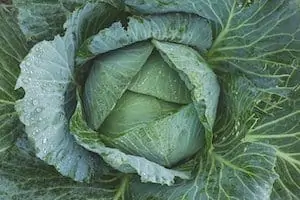
Grab a big head of cabbage from the store, use the green leaves, and wrap them around your breasts. When they start to wilt, change out the leaves. It does work, even if it feels weird sticking cabbage leaves in your bra.
However,
If you don’t want to use cabbage leaves or simply don’t have space in your refrigerator, try Cabocreme Breast Cream for Weaning and Engorgement. This cream has all of the same qualities of cabbage with a better scent. Use it on your breasts every three to four hours.
Take Sudafed or a Decongestant
Most doctors don’t recommend you take any medication unless medically warranted, but mothers swear by using Sudafed or other decongestants to dry up their milk supply.
This is an accident that many mothers have faced. You get a cold, run to the store, and pick up some medication. Within a few days, your milk supply is dwindling to nothing, and you have no idea what went wrong. The medicine contains chemicals that dry up mucus and that dries up breast milk as well.
Note that:
The best results come from medication that uses Pseudoephedrine, which most stores keep behind the pharmacy counter. You have to ask for it. Some products contain Phenylephrine, which may not work as well for drying up purposes.
Take Birth Control Pills
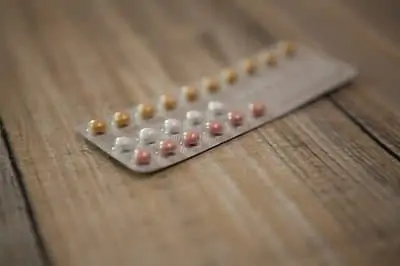
Many versions of birth control pills increase Oestrogen, which reduces your breast milk supply. That’s why doctors ask if you’re breastfeeding before prescribing medication; only some are breastfeeding compatible.
Speak to your doctor about this option, and realize it won’t be fast. It might take several weeks for birth control to dry up your supply, and it might merely decrease it rather than dry it up entirely. However, if it helps a little bit and you don’t plan to get pregnant again soon, birth control could help dry up your milk supply.
Apply Ice Packs to Your Breasts
Your breasts will feel fuller and tight while weaning, and using heat can cause milk to come out. That’s not ideal for weaning, so use ice packs on your breasts. Ice packs, cold compressions, frozen gel packs, and peas cool down your breasts and reduce swelling and pain.
Try Anti-Lactation Drugs
Last but not least, asking your doctor for prescription medication to dry up your milk supply is a good choice, but not all insurance companies cover these medications. Some also have undesired side effects.
Here are some of the possible anti-lactation prescription medications you can take.
Dostinex (Cabergoline)
Some evidence suggests that this medication helps with oversupply and if you want to decrease your supply, rather than dry it up entirely.
Parlodel (Bromocriptine)
Parlodel is used to prevent and suppress milk production, and it helps with Parkinson’s Disease. Unfortunately, for the purpose of drying up, some of the potential side effects are severe.
Also, while taking Parlodel, you cannot breastfeed at all. So, only take this option if you cannot breastfeed or have weaned your baby entirely.
Remember, we are NOT doctors. If you’re interested in trying one of these medications, your doctor will be able to explain the pros and cons.
Final Thoughts
When you decide to dry up your milk supply without getting mastitis, you need a plan. Hopefully, you have plenty of time to wean, and you can gradually decrease nursing sessions and allow your body to adjust and avoid clogged ducts. If not, try a combination of these trips to dry up fast.
Hey, this is Linda. My biggest accomplishment in life is being a mother of four children. Their current ages range from almost ten years old down to 20 months old.
I’m passionate about writing parenting articles because I understand so well all of the problems and trials you face as a parent. From breastfeeding woes to budgeting problems and behavior problems, along with everything in between, chances are I’ve faced it over the last ten years. Read more about Linda here.



